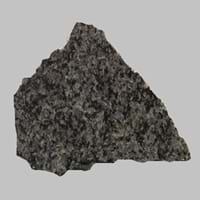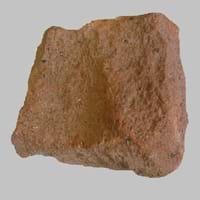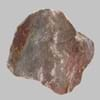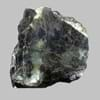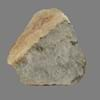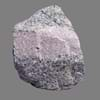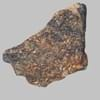Definition
Norite is a mafic intrusive igneous rock composed largely of the calcium-rich plagioclase labradorite, orthopyroxene, and olivine
Ignimbrite is a volcanic rock consisting mainly of pumice fragments, formed by the consolidation of material deposited by pyroclastic flows
Origin
Norway
New Zealand
Discoverer
Unknown
Patrick Marshall
Etymology
From the Norwegian name for Norway, Norge
From Latin ignis fire + imber, imbr- shower of rain, storm cloud + -ite
Class
Igneous Rocks
Igneous Rocks
Sub-Class
Durable Rock, Hard Rock
Durable Rock, Medium Hardness Rock
Other Categories
Coarse Grained Rock, Opaque Rock
Fine Grained Rock, Opaque Rock
Texture
Phaneritic
Aphanitic
Color
Dark Grey to Black
Beige, Black, Brown, Grey, Pink, White
Durability
Durable
Durable
Scratch Resistant
Yes
Yes
Appearance
Veined and Shiny
Dull, Vesicular and Foilated
Interior Uses
Decorative Aggregates, Entryways, Interior Decoration
Decorative Aggregates, Floor Tiles, Homes, Interior Decoration
Exterior Uses
As Building Stone, As Facing Stone, Paving Stone, Garden Decoration
As Building Stone, Garden Decoration, Office Buildings, Paving Stone
Other Architectural Uses
Curbing
Curbing
Construction Industry
As Dimension Stone, Building houses or walls, Cement Manufacture, Construction Aggregate, for Road Aggregate
Building houses or walls, Construction Aggregate
Medical Industry
Not Yet Used
Not Yet Used
Antiquity Uses
Artifacts, Monuments, Sculpture
Artifacts, Monuments, Sculpture, Small Figurines
Commercial Uses
Cemetery Markers, Commemorative Tablets, Laboratory bench tops, Jewelry, Sea Defence, Tombstones
Cemetery Markers, Commemorative Tablets, Creating Artwork
Types
Not Available
Not Available
Features
Smooth to touch
Always found as volcanic pipes over deep continental crust
Archaeological Significance
Famous Monuments
Data Not Available
Data Not Available
Famous Sculptures
Data Not Available
Data Not Available
Pictographs
Not Used
Used
Petroglyphs
Not Used
Used
Formation
Norite is a fine-grained, hard rock which is a type of metasomatite, essentially altered basalt. It forms with or without crystallization, either below the surface as intrusive rocks or on the surface as extrusive rocks.
Ignimbrites are formed from very poorly sorted mixture of volcanic ash or tuff and pumice lapilli, commonly with scattered lithic fragments.
Mineral Content
Augite, Olivine, Plagioclase, Pyroxene
Apatite, Biotite, Calcite, Chlorite, Feldspar, Hematite, Hornblade, Ilmenite, Magnetite, Olivine, Pyroxene, Quartz
Compound Content
Aluminium Oxide, CaO, Chromium(III) Oxide, Iron(III) Oxide, Potassium Oxide, MgO, Sodium Oxide, Silicon Dioxide, Sulfur Trioxide
Ca, NaCl
Types of Metamorphism
Cataclastic Metamorphism, Impact Metamorphism
Burial Metamorphism, Contact Metamorphism, Hydrothermal Metamorphism, Impact Metamorphism, Regional Metamorphism
Types of Weathering
Biological Weathering
Biological Weathering, Chemical Weathering
Types of Erosion
Chemical Erosion, Coastal Erosion
Chemical Erosion, Coastal Erosion
Grain Size
Coarse Grained
Fine Grained
Fracture
Conchoidal
Uneven
Porosity
Highly Porous
Highly Porous
Luster
Not Available
Vitreous to Dull
Cleavage
Not Available
Not Available
Toughness
1.6
Not Available
Specific Gravity
2.86-2.87
2.73
Transparency
Opaque
Opaque
Density
2.7-3.3 g/cm3
1-1.8 g/cm3
Specific Heat Capacity
Not Available
Resistance
Impact Resistant, Pressure Resistant, Wear Resistant
Heat Resistant, Impact Resistant, Pressure Resistant, Wear Resistant
Deposits in Eastern Continents
Asia
India, Russia
Afghanistan, Armenia, Azerbaijan, Burma, Cambodia, China, India, Indonesia, Iran, Japan, Malaysia, Mongolia, Nepal, North Korea, Pakistan, Saudi Arabia, Syria, Taiwan, Thailand, Turkey, Vietnam, Yemen
Africa
South Africa
Cameroon, Cape Verde, Chad, Djibouti, Eritrea, Ethiopia, Kenya, Libya, Madagascar, Nigeria, Rwanda, South Africa, Sudan, Tanzania, Uganda
Europe
Germany, Greece, Italy, Scotland, Turkey
France, Georgia, Germany, Greece, Iceland, Italy, Netherlands, Poland, Portugal, Spain, United Kingdom
Others
Greenland
Antarctica, Hawaii Islands
Deposits in Western Continents
North America
Canada, USA
Canada, Costa Rica, Panama, USA
South America
Brazil, Colombia, Venezuela
Argentina, Bolivia, Brazil, Chile, Colombia, Ecuador
Deposits in Oceania Continent
Australia
New Zealand, Queensland
Central Australia, Western Australia
